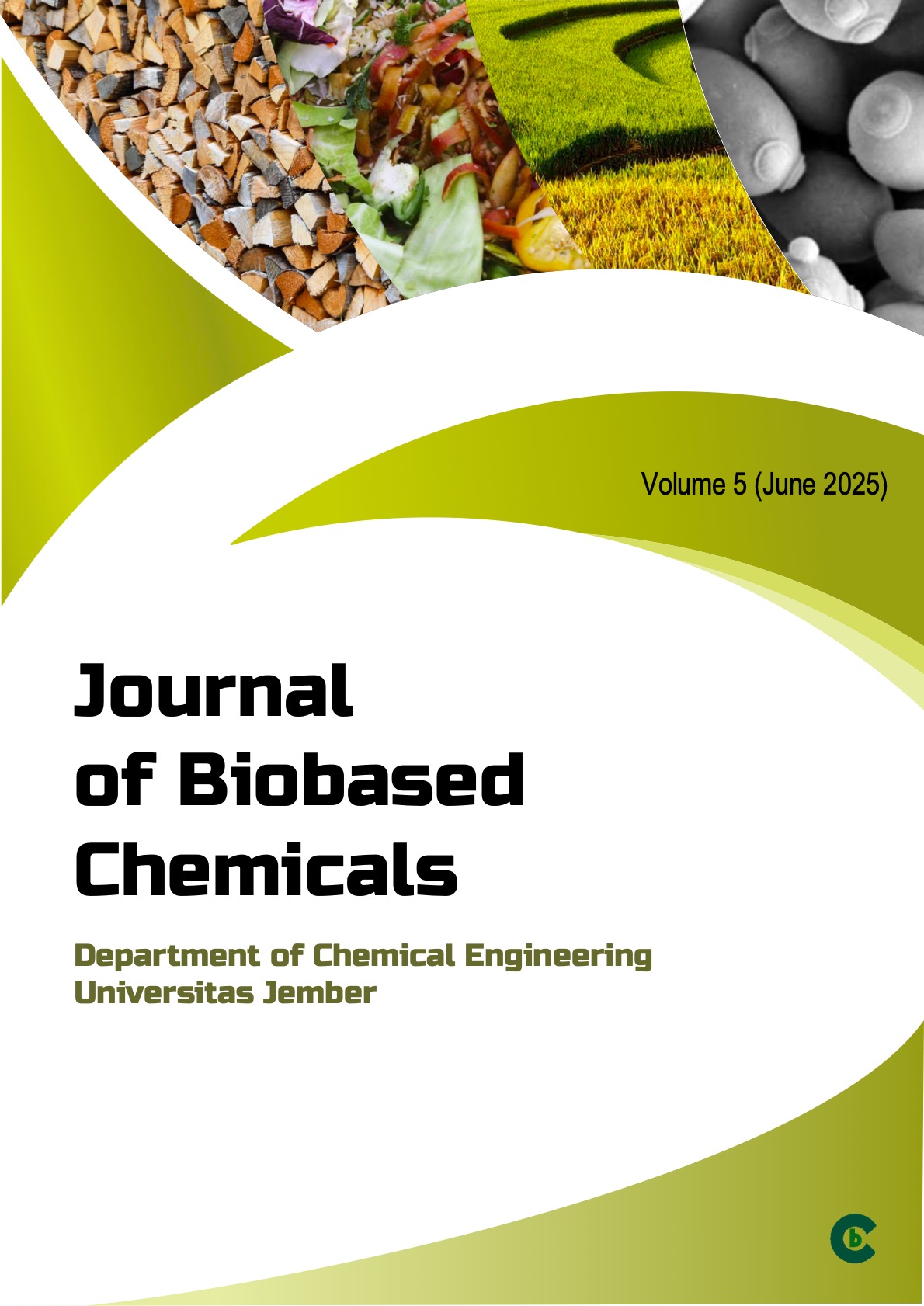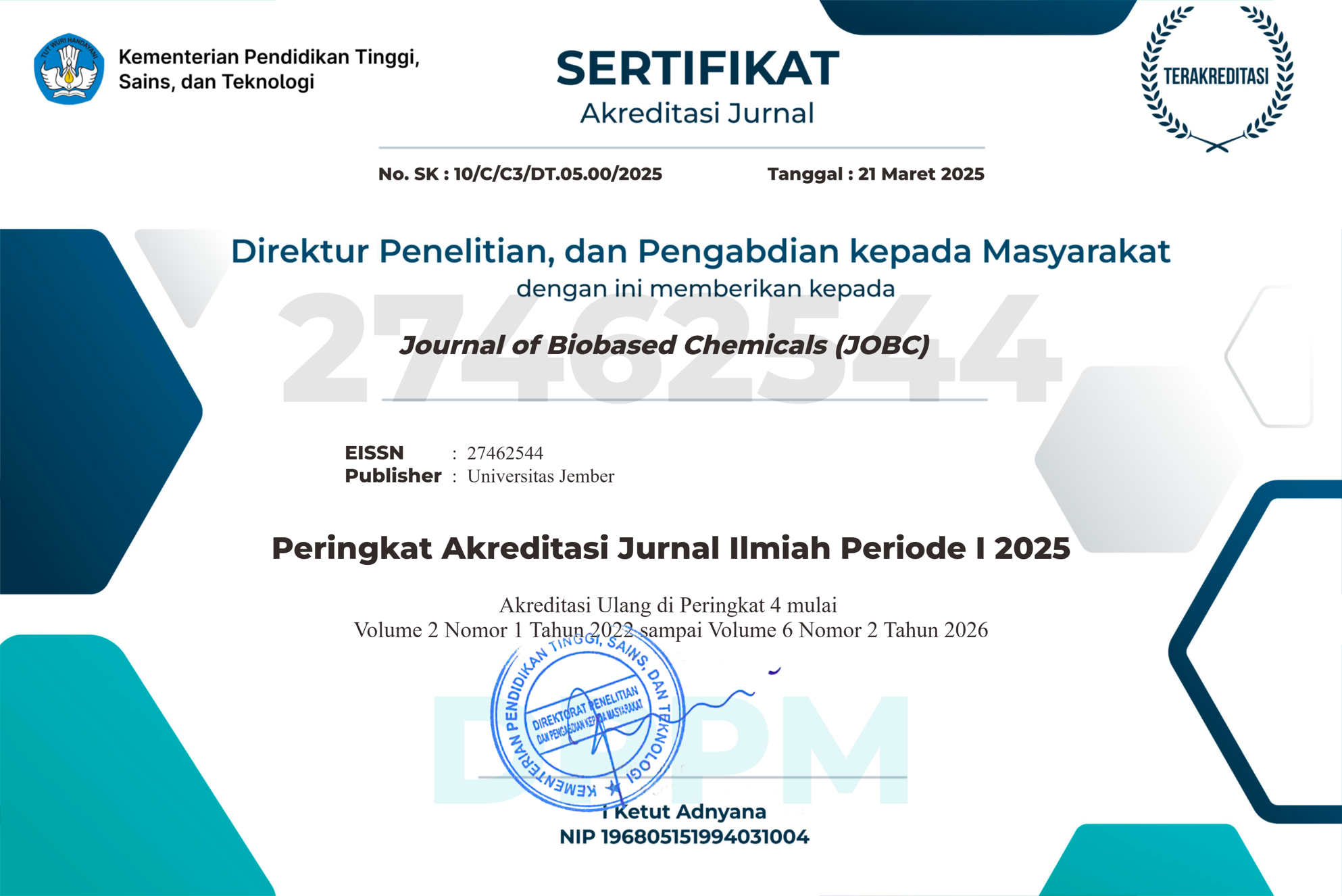Mass Transfer Coefficient of Oleoresin Extraction from Peperomia pellucida L. Using Ultrasonic Cleaner
DOI:
https://doi.org/10.19184/jobc.v5i1.5594Keywords:
Peperomia pellucida L., extraction, oleoresin, UAE, mass transfer coefficientAbstract
Indonesia has a variety of wild plants that are beneficial for health, one of which is Peperomia pellucida L. Several studies have explored the use of Peperomia pellucida for health and cosmetic purposes. This plant can produce oleoresin, a compound obtained through the extraction of plants or materials using solvents. In this research, extraction was carried out using the Ultrasonic Assisted Extraction (UAE) method. The aim of this research is to investigate the effect of varying the mass of Peperomia pellucida and extraction time on the concentration of extracted oleoresin and its mass transfer coefficient. The experiments were conducted using variations in mass and extraction time until equilibrium concentration was reached, with a constant solvent volume. The resulting extract was then analyzed to determine the oleoresin concentration in the solvent under various conditions and to calculate the mass transfer coefficient (KC) by correlating oleoresin concentration with time. Based on the research that has been done with 200 ml of ethanol, variations in sample weight of 1, 2, 3, 4, and 5 grams and extraction time to constant concentration showed that the greater the sample mass and the longer the extraction time, the greater the concentration obtained. Additionally, KC values increased proportionally with sample mass, with the highest KC value of 4.4265 x 10-5 g ethanol/min.mm² observed at a sample mass of 4 grams.








